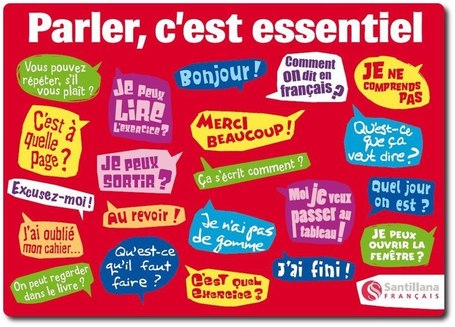French Sign

Sunday, November 26, 2017
Solar and Lunar Eclipses
In this interactive activity, you will learn how the motions of the sun, Earth, and moon cause eclipses. To begin, post the following link in your browser:
https://download.elearningontario.ca/repository/13/1382740000/GRD6SCIEU04A03/mme/U4A3_Eclipses/The%20Eclipses.html
Please use the Cornell Notes system to record the following:
(a) Solar eclipse: include the definition and draw a diagram to illustrate; include the words Penumbra, Numbra, and New Moon in your diagram.
(b) Lunar eclipse: include the definition and draw a diagram to illustrate; include all of the labels as they appear in the interactive
Don't forget to check your understanding once you've completed the interactive!
Source: http://www.asignobservatoryii.com/celestialevents.htm
Monday, November 20, 2017
A Solar Adventure
In this interactive activity, you will travel to the sun, Earth, and the moon to understand how they interact with one another. To begin, go to the OERB website and post the following link in your browser:
https://download.elearningontario.ca/repository/13/1382740000/GRD6SCIEU04A03/mme/U4A3_Sun_earth_and_moon/9103_The%20Solar%20System%20Adventure.html
Please use the Cornell Notes system to record what you have learned.
You should be taking notes of the following on your journey:
(1) The names of the planets in our solar system
(2) The sun
(3) The Earth
(4) The moon
(5) How the sun, Earth, and moon are interrelated
Happy travels!
Source:http://www.moonconnection.com/moon_phases.phtml
https://download.elearningontario.ca/repository/13/1382740000/GRD6SCIEU04A03/mme/U4A3_Sun_earth_and_moon/9103_The%20Solar%20System%20Adventure.html
Please use the Cornell Notes system to record what you have learned.
You should be taking notes of the following on your journey:
(1) The names of the planets in our solar system
(2) The sun
(3) The Earth
(4) The moon
(5) How the sun, Earth, and moon are interrelated
Happy travels!
Source:http://www.moonconnection.com/moon_phases.phtml
Sunday, November 12, 2017
Space Talk
Time to review some space terminology! In this interactive activity, you will review some important terms that we will be discussing in this unit. To begin, please click here.
If you are unable to access the site, paste the following link in your browser once you have accessed OERB (see my previous post for instructions on how to access interactives):
https://download.elearningontario.ca/repository/13/1382740000/GRD6SCIEU04A03/mme/U4A3_space_terminology/LO9031%20-%20Spacetalk.html
Please take notes of the following using the Cornell Notes system:
Revolution Moon Asteroids Planet
Rotation Tilt Axis Comet
Feel free to draw some diagrams and/or pictures in your notes.
Source: http://www.esa.int/Our_Activities/Space_Science/ESA_selects_planet-hunting_PLATO_mission
If you are unable to access the site, paste the following link in your browser once you have accessed OERB (see my previous post for instructions on how to access interactives):
https://download.elearningontario.ca/repository/13/1382740000/GRD6SCIEU04A03/mme/U4A3_space_terminology/LO9031%20-%20Spacetalk.html
Please take notes of the following using the Cornell Notes system:
Revolution Moon Asteroids Planet
Rotation Tilt Axis Comet
Feel free to draw some diagrams and/or pictures in your notes.
Source: http://www.esa.int/Our_Activities/Space_Science/ESA_selects_planet-hunting_PLATO_mission
Exploring Space from Earth
In class we discussed how both binoculars and telescopes can be used to explore space from Earth. Galileo Galilei, a famous scientist made important discoveries using a simple telescope. Much of what we know about our solar system was discovered through the use of the telescope from Earth.
The following simulation will put you in Galileo's shoes! It will allow you to see what he observed through his refracting telescope which had about the same power as a pair of modern binoculars. Click on the tabs on the left in order to experience this simulation. If you have a pair of binoculars at home, you should be able to make the same observations as Galileo!
We also read about the Canada France Hawaii telescope on Mauna Kea in Hawaii. Click on this link to see some amazing images taken with the telescope's 340 Megapixel camera! Click on the 'Image Archive' tab for some incredible photos!
The following simulation will put you in Galileo's shoes! It will allow you to see what he observed through his refracting telescope which had about the same power as a pair of modern binoculars. Click on the tabs on the left in order to experience this simulation. If you have a pair of binoculars at home, you should be able to make the same observations as Galileo!
We also read about the Canada France Hawaii telescope on Mauna Kea in Hawaii. Click on this link to see some amazing images taken with the telescope's 340 Megapixel camera! Click on the 'Image Archive' tab for some incredible photos!
Thursday, November 2, 2017
L'ONU en vedette
Visite les sites suivants pour répondre aux questions à propos des Nations Unies et l'engagement du Canada envers l'ONU:
1. Nations Unies
2. Mission permanente du Canada auprès des Nations Unies
1. Nations Unies
2. Mission permanente du Canada auprès des Nations Unies
http://eu-un.europa.eu/event/united-nations-day/
Subscribe to:
Comments (Atom)




